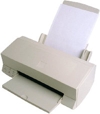The Absolute Phrase
Recognize an absolute phrase when you see one.
An absolute phrase combines a noun and a participle with any accompanying modifiers or objects. The pattern looks like this:
noun + participle + optional modifier(s) and/or object(s)
Here are some examples:
Legs quivering
Legs = noun; quivering = participle.
Her arms folded across her chest
Arms = noun; folded = participle; her, across her chest = modifiers.
Our fingers scraping the leftover frosting off the plates
Fingers = noun; scraping = participle; frosting = direct object; our, the, leftover, off the plates = modifiers.
Rather than modifying a specific word, an absolute phrase will describe the whole clause:
Legs quivering, our old dog Gizmo dreamed of chasing squirrels.
Her arms folded across her chest, Professor Hill warned the class about the penalties of plagiarism.
We devoured Aunt Lenora's carrot cake, our fingers scraping the leftover frosting off the plates.
